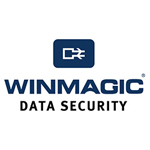December 19, 2024
December 19, 2024
Copyright 2023, IT Voice Media Pvt. Ltd.
All Rights Reserved

 Rahul Kumar,Country manager,win magic,India
Rahul Kumar,Country manager,win magic,India Although most cloud service providers do offer protection with features such as least privilege access, network segmentation, and host-based and network-based intrusion system, among others, organizations need to implement their own security on top of what is provided by the cloud service provider. In the common Shared Responsibility model, the Cloud Service Provider is responsible for the cloud. The Enterprise is responsible for what they put in it. Organizations need to ensure that their data is encrypted at all times, and control all aspects of data security – from data encryption, to key policies and key management, to regular auditing and compliance reporting. Your data and your customers’ data is ultimately your responsibility. Do not that responsibility lightly.
Although most cloud service providers do offer protection with features such as least privilege access, network segmentation, and host-based and network-based intrusion system, among others, organizations need to implement their own security on top of what is provided by the cloud service provider. In the common Shared Responsibility model, the Cloud Service Provider is responsible for the cloud. The Enterprise is responsible for what they put in it. Organizations need to ensure that their data is encrypted at all times, and control all aspects of data security – from data encryption, to key policies and key management, to regular auditing and compliance reporting. Your data and your customers’ data is ultimately your responsibility. Do not that responsibility lightly.